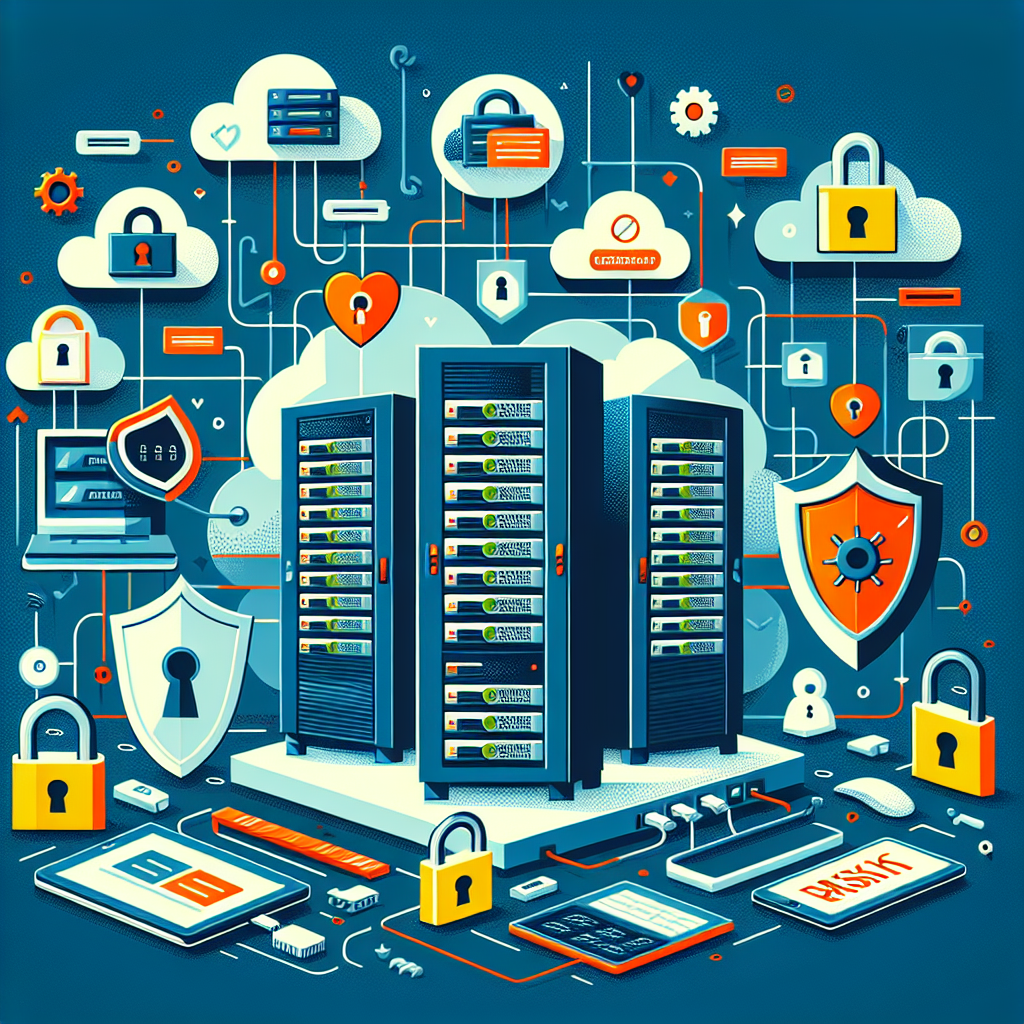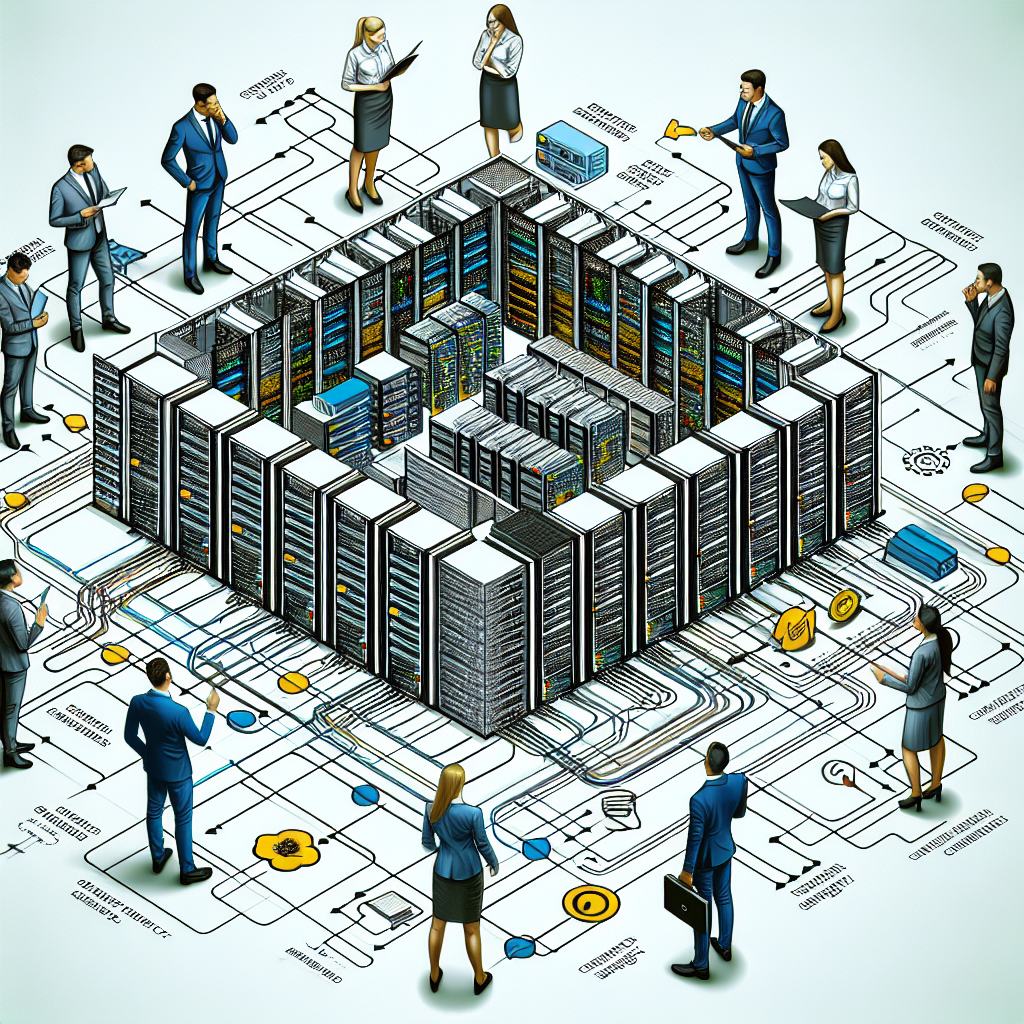Your cart is currently empty!
Tag: Addressing

The Human Factor in Data Center Downtime: Addressing Training and Processes
Data center downtime is a nightmare scenario for any organization that relies heavily on their IT infrastructure. The costs associated with downtime can be astronomical, not only in terms of lost revenue but also in terms of damage to a company’s reputation and customer trust. While many factors can contribute to data center downtime, one often overlooked aspect is the human factor.In a recent study by the Uptime Institute, it was found that human error was the leading cause of data center outages, accounting for nearly 70% of all incidents. This underscores the importance of addressing the human factor in data center downtime by focusing on training and processes.
Training is crucial in ensuring that data center staff are equipped with the knowledge and skills needed to effectively manage and maintain the facility. This includes training on best practices for equipment maintenance, troubleshooting common issues, and responding to emergencies. Regular training sessions and drills can help staff stay sharp and prepared for any situation that may arise.
In addition to training, having clearly defined processes and procedures in place can help mitigate the risk of human error leading to downtime. This includes having documented workflows for routine tasks, such as equipment maintenance and software updates, as well as emergency response plans for handling unexpected events like power outages or system failures. By following standardized processes, data center staff can reduce the likelihood of errors and ensure that downtime is minimized.
Furthermore, implementing automation and monitoring tools can also help reduce the risk of human error. By automating routine tasks and setting up alerts for potential issues, data center staff can proactively address issues before they escalate into downtime-causing incidents.
Ultimately, addressing the human factor in data center downtime requires a multi-faceted approach that includes training, processes, and technology. By investing in these areas, organizations can reduce the risk of downtime and ensure that their data center operations run smoothly and efficiently.
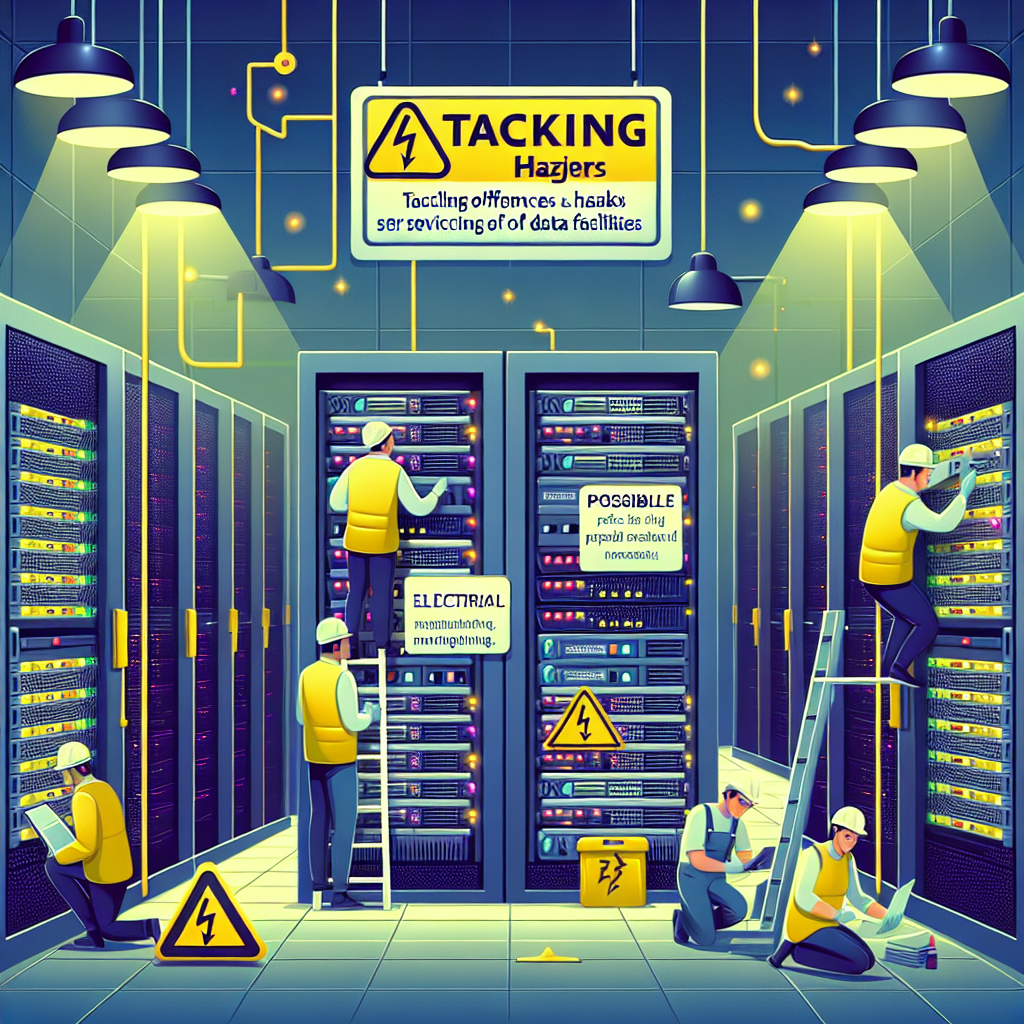
Addressing Challenges and Risks in Data Center Electrical Maintenance
Data centers play a crucial role in the modern business landscape, serving as the backbone of our digital infrastructure. With the increasing reliance on technology, ensuring that data centers are running efficiently and effectively is more important than ever. One critical aspect of maintaining a data center is electrical maintenance, as any disruptions or failures in the electrical system can have serious consequences.Addressing challenges and risks in data center electrical maintenance requires a comprehensive approach that includes regular inspections, monitoring, and preventive maintenance practices. Here are some key challenges and risks to be aware of when it comes to data center electrical maintenance:
1. Overload and Overheating: Data centers are filled with a multitude of electrical equipment, from servers to cooling systems. If these systems are not properly managed, they can overload the electrical circuits and cause overheating, leading to potential fires or equipment failures. Regular inspections and load testing can help identify any potential issues before they escalate.
2. Power Quality Issues: Fluctuations in power quality, such as voltage sags, surges, or harmonics, can damage sensitive equipment and disrupt operations. Installing power conditioning equipment, such as voltage regulators or surge protectors, can help mitigate these risks and ensure a stable power supply.
3. Corrosion and Wear: Over time, electrical components can corrode or wear out, leading to poor connectivity and increased resistance. Regular cleaning and maintenance of electrical connections, as well as replacing worn-out components, can help prevent potential failures.
4. Environmental Factors: Data centers are often located in harsh environments, such as industrial areas or regions prone to extreme weather conditions. Environmental factors, such as humidity, temperature fluctuations, and dust, can impact the performance of electrical equipment. Implementing proper environmental controls, such as HVAC systems and dust filters, can help maintain optimal conditions for the electrical system.
5. Human Error: Human error is a common cause of electrical failures in data centers, whether it be accidental damage to equipment or incorrect configurations. Training staff on proper maintenance procedures and implementing strict protocols for handling electrical equipment can help reduce the risk of human error.
In conclusion, addressing challenges and risks in data center electrical maintenance requires a proactive and vigilant approach. By implementing regular inspections, monitoring systems, and preventive maintenance practices, data center operators can mitigate potential risks and ensure the reliability and efficiency of their electrical systems. Investing in proper maintenance and upkeep of electrical equipment is essential for the smooth operation of data centers and the overall success of businesses that rely on them.
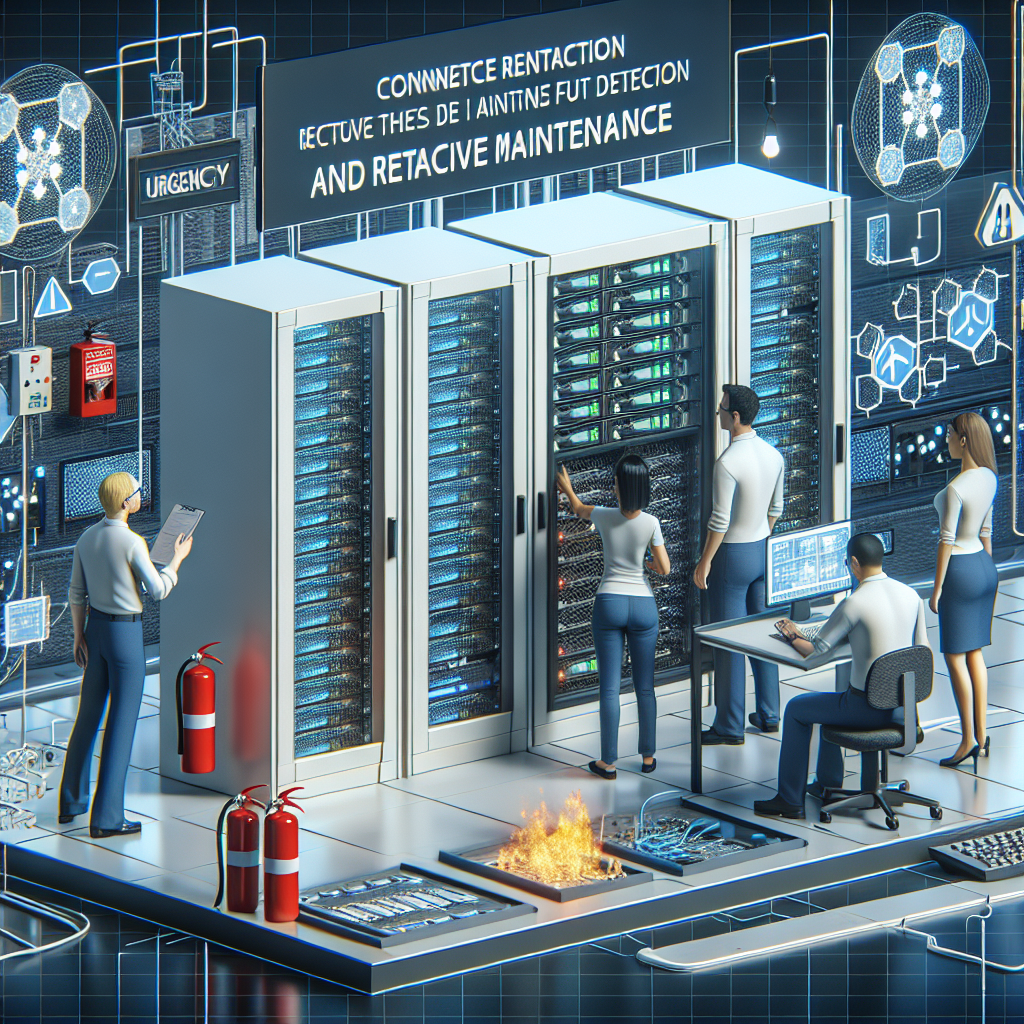
Best Practices for Addressing Emergencies in Data Center Reactive Maintenance
In today’s digital age, data centers play a crucial role in storing and processing vast amounts of information for businesses and organizations. As such, any disruptions or emergencies in data centers can have severe consequences, leading to potential data loss, downtime, and financial losses. That’s why it’s essential for data center managers to have a solid plan in place for addressing emergencies through reactive maintenance. Here are some best practices to consider:1. Create a Comprehensive Emergency Response Plan:
The first step in addressing emergencies in a data center is to have a comprehensive emergency response plan in place. This plan should outline the steps to take in the event of various emergencies, such as power outages, equipment failures, or natural disasters. It should also include contact information for key personnel, vendors, and emergency services.
2. Regularly Test Backup Systems:
One of the most critical components of any data center emergency response plan is the backup systems. Regularly testing backup power supplies, cooling systems, and data recovery solutions can help ensure they are functioning correctly and can be relied upon in an emergency.
3. Implement Remote Monitoring and Management:
Remote monitoring and management tools can provide real-time visibility into the health and performance of data center infrastructure. By implementing these tools, data center managers can quickly identify and address potential issues before they escalate into emergencies.
4. Conduct Regular Maintenance and Inspections:
Preventive maintenance is essential for reducing the risk of emergencies in a data center. Regularly scheduled inspections and maintenance can help identify potential problems before they occur, allowing for proactive repairs and replacements.
5. Establish Clear Communication Protocols:
Effective communication is key during emergencies. Data center managers should establish clear communication protocols and ensure that all staff are trained on how to communicate effectively during an emergency situation.
6. Develop Relationships with Reliable Vendors:
Having reliable vendors on standby can be invaluable during emergencies. Data center managers should establish relationships with vendors for equipment repairs, replacements, and emergency services to ensure quick response times and minimal downtime.
7. Conduct Post-Incident Reviews:
After an emergency has been addressed, it’s essential to conduct a post-incident review to identify what went well and what could be improved for future emergencies. This feedback can help refine the emergency response plan and prevent similar incidents from occurring in the future.
In conclusion, addressing emergencies in a data center through reactive maintenance requires careful planning, regular testing, and proactive measures. By implementing these best practices, data center managers can minimize downtime, protect critical data, and ensure the continued operation of their data center infrastructure.
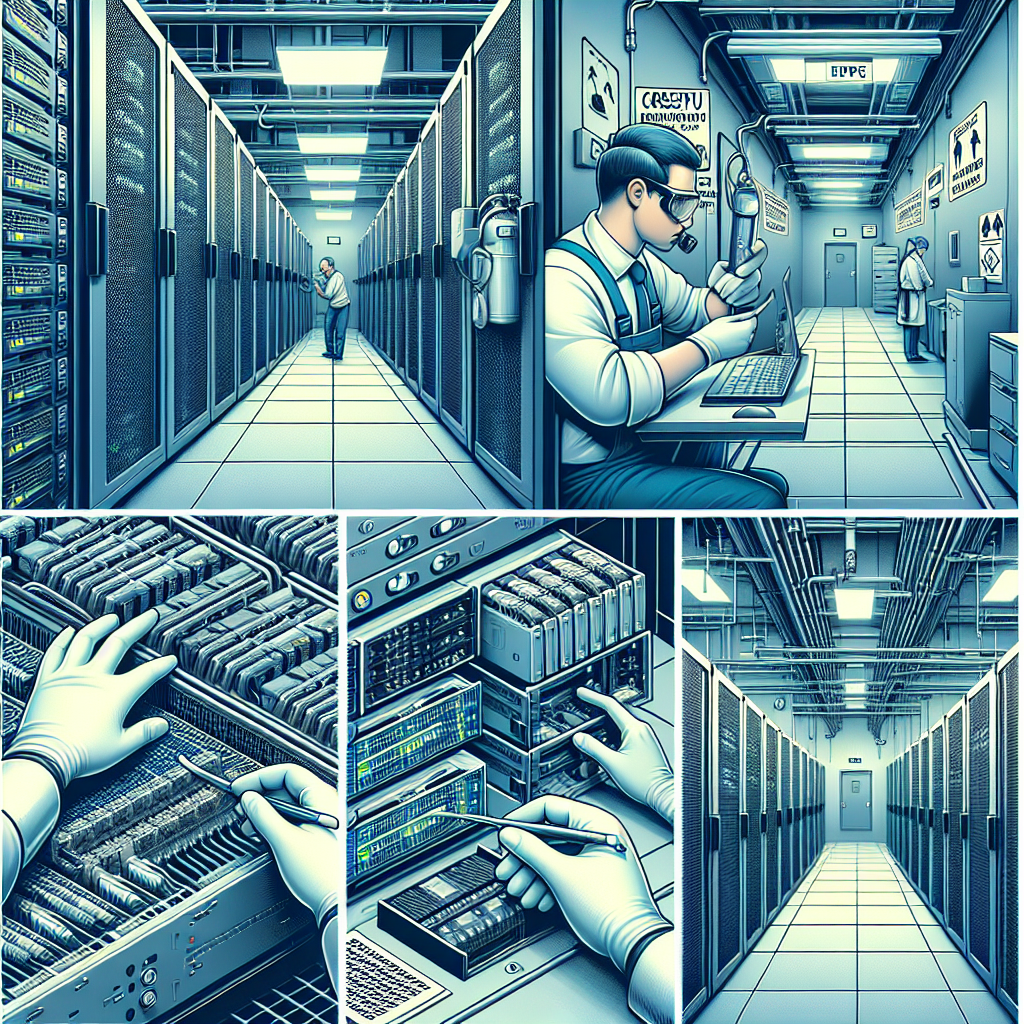
Data Center Safety: Understanding and Addressing Potential Hazards
Data centers are essential facilities that house and manage critical information technology infrastructure. They play a crucial role in ensuring the smooth functioning of various organizations, from small businesses to large enterprises. However, data centers also pose several potential hazards that can compromise the safety and security of both the facility and its personnel. Understanding and addressing these hazards is essential to maintaining a safe and efficient working environment.One of the primary hazards in a data center is the risk of fire. Data centers house a large number of electronic devices, such as servers, routers, and storage units, which generate heat during operation. If not properly managed, this heat can lead to overheating and potentially cause a fire. To mitigate this risk, data centers must have adequate fire suppression systems in place, such as sprinklers, fire extinguishers, and smoke detectors. Regular maintenance and testing of these systems are also essential to ensure they are functioning properly in the event of an emergency.
Another common hazard in data centers is electrical hazards. The high concentration of electrical equipment in data centers increases the risk of electrical fires, electrocution, and power surges. To prevent these hazards, data centers must adhere to strict electrical safety protocols, such as proper grounding, insulation, and equipment maintenance. Additionally, personnel working in data centers should be trained on safe electrical practices and procedures to minimize the risk of accidents.
Physical hazards, such as slips, trips, and falls, are also a concern in data centers. The layout of data centers often includes narrow aisles, raised floors, and cable trays, which can pose a tripping or falling hazard if not properly maintained. To address these hazards, data centers should implement clear signage, proper lighting, and regular housekeeping practices to ensure a safe working environment. Additionally, personnel should be trained on proper ergonomics and lifting techniques to prevent musculoskeletal injuries while working in the data center.
Data centers also face security hazards, such as unauthorized access, theft, and sabotage. To address these risks, data centers must implement stringent access control measures, such as biometric authentication, security cameras, and intrusion detection systems. Personnel working in data centers should also be trained on security protocols, such as password protection, data encryption, and physical security measures, to prevent unauthorized access to sensitive information.
In conclusion, data center safety is a critical concern that must be addressed to ensure the smooth and secure operation of these essential facilities. By understanding and addressing potential hazards, data centers can create a safe working environment for their personnel and protect their valuable IT infrastructure. Implementing proper safety protocols, regular maintenance, and employee training are essential steps in mitigating the risks associated with data center operations. Ultimately, prioritizing safety in data centers is essential to safeguarding the integrity and security of critical information technology assets.
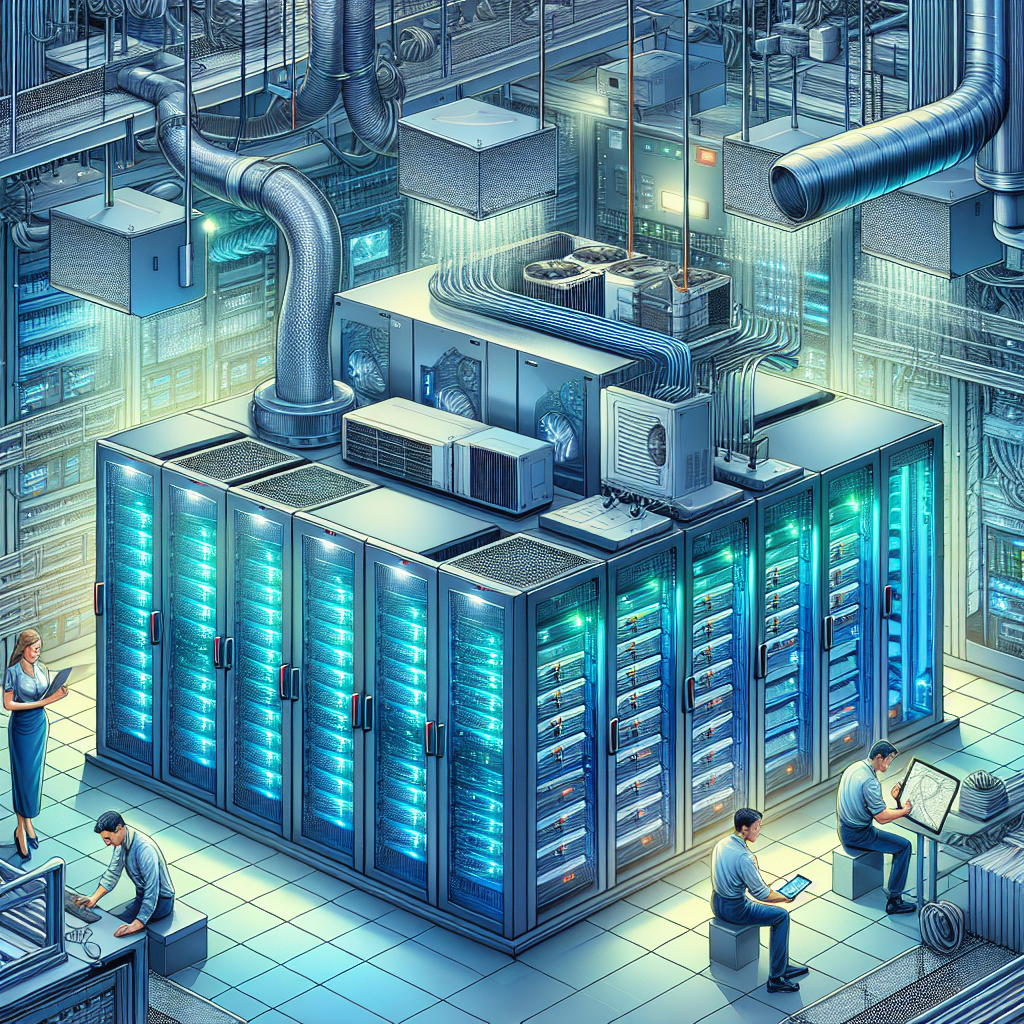
Addressing the Challenges of Data Center Cooling
Data centers are essential for storing and processing large amounts of data, but they can also generate a significant amount of heat. This heat must be properly managed to ensure the smooth operation of the servers and prevent damage to the equipment. However, cooling a data center can be a complex and expensive process, presenting a number of challenges for data center managers.One of the main challenges of data center cooling is energy consumption. Cooling systems can account for a significant portion of a data center’s energy usage, driving up operational costs and contributing to carbon emissions. Finding ways to reduce energy consumption while maintaining optimal operating temperatures is a key concern for data center managers.
Another challenge is ensuring effective cooling throughout the data center. Hot spots can develop in certain areas of the facility, leading to uneven cooling and potential overheating of equipment. Proper airflow management and the use of containment systems can help mitigate this issue, but it requires careful planning and monitoring to ensure consistent cooling across the data center.
Additionally, as data centers continue to grow in size and complexity, the challenge of scaling cooling systems becomes more pronounced. Traditional cooling methods may not be sufficient to handle the increasing heat loads, requiring data center managers to invest in more advanced cooling technologies such as liquid cooling or indirect evaporative cooling. These systems can be costly to implement and may require modifications to the existing infrastructure.
Data center managers also face challenges related to environmental factors. External temperatures and humidity levels can impact the efficiency of cooling systems, making it necessary to adjust cooling strategies based on external conditions. Additionally, increased environmental awareness has led to greater scrutiny of data center energy usage and carbon footprint, prompting data center managers to explore more sustainable cooling solutions.
To address these challenges, data center managers can implement a number of strategies to improve cooling efficiency and reduce energy consumption. This may include optimizing airflow to eliminate hot spots, implementing energy-efficient cooling technologies, and utilizing free cooling methods such as air-side economization. Regular monitoring and maintenance of cooling systems are also essential to ensure optimal performance and prevent equipment failures.
In conclusion, data center cooling presents a number of challenges for data center managers, including energy consumption, uneven cooling, scalability, and environmental considerations. By implementing efficient cooling strategies and investing in advanced cooling technologies, data center managers can overcome these challenges and ensure the reliable operation of their data centers.
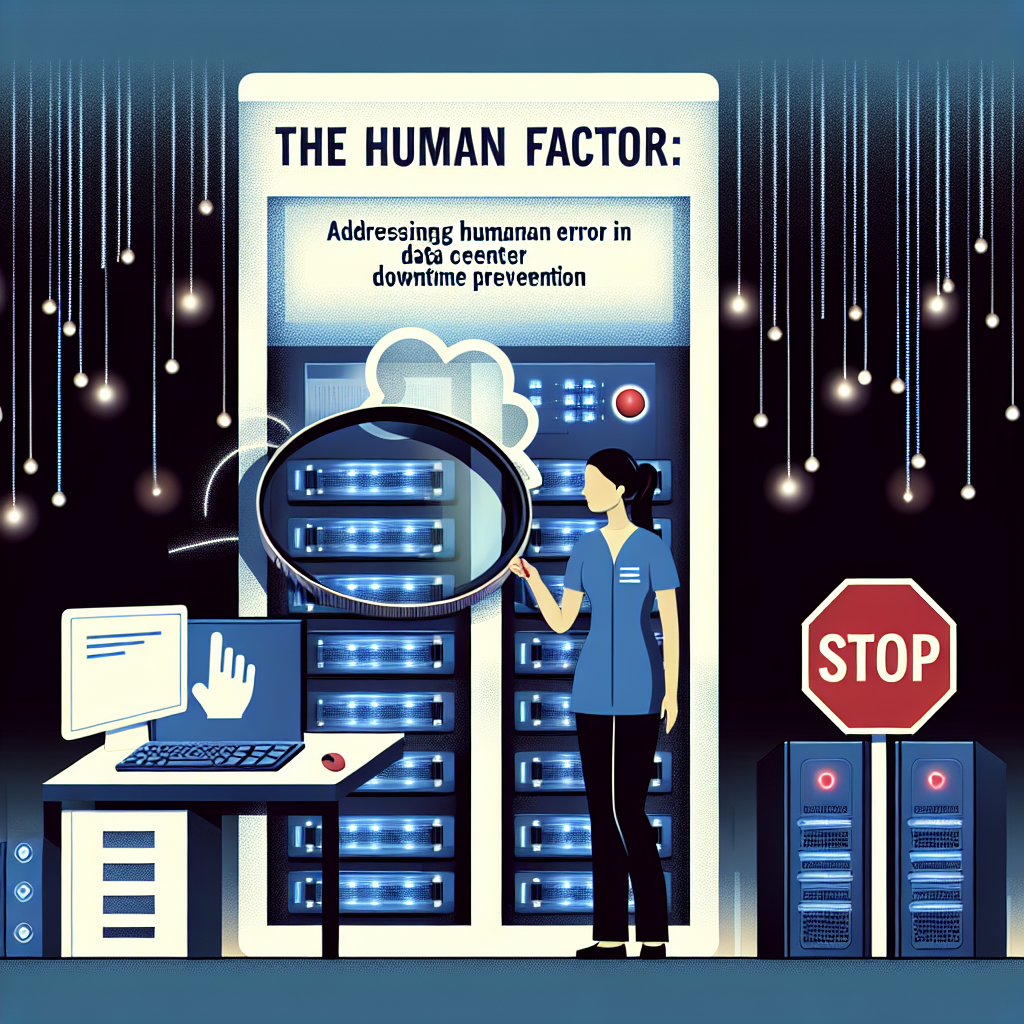
The Human Factor: Addressing Human Error in Data Center Downtime Prevention
Data centers are the backbone of modern technology, housing the servers and infrastructure that power our digital world. However, despite their critical importance, data centers are not immune to downtime – and one of the leading causes of downtime is human error.In fact, according to a study by the Uptime Institute, human error is responsible for 70% of data center downtime incidents. This staggering statistic underscores the importance of addressing human error in data center downtime prevention.
So, what can be done to mitigate the risk of human error in data centers? The first step is to understand the common causes of human error in this environment. Some of the most common causes include:
– Misconfiguration: Incorrectly configuring servers, switches, or other hardware can lead to system failures and downtime.
– Lack of training: Inadequate training or experience can result in mistakes that compromise the integrity of the data center.
– Poor communication: Failures in communication between team members can lead to misunderstandings and errors that impact data center operations.
To address these issues, data center operators must prioritize human factors in their downtime prevention strategies. This includes implementing robust training programs for staff, establishing clear communication protocols, and implementing automation tools to reduce the risk of human error.
Training programs should cover best practices for data center operations, including proper configuration procedures, troubleshooting techniques, and emergency response protocols. Regular training sessions and refresher courses can help ensure that staff are equipped to handle the demands of the data center environment.
Clear communication protocols are also essential for preventing human error. By establishing standardized procedures for reporting issues, sharing information, and coordinating responses to incidents, data center operators can reduce the risk of miscommunication and misunderstandings that can lead to downtime.
Automation tools can also play a key role in reducing human error in data centers. By automating routine tasks such as system monitoring, software updates, and configuration management, operators can minimize the potential for mistakes and ensure consistent performance across the data center environment.
In conclusion, human error is a significant risk factor in data center downtime incidents. By addressing the human factor through training, communication, and automation, data center operators can reduce the likelihood of errors and improve the reliability and resilience of their infrastructure. Prioritizing human factors in downtime prevention strategies is essential for ensuring the continued success of data center operations in an increasingly digital world.
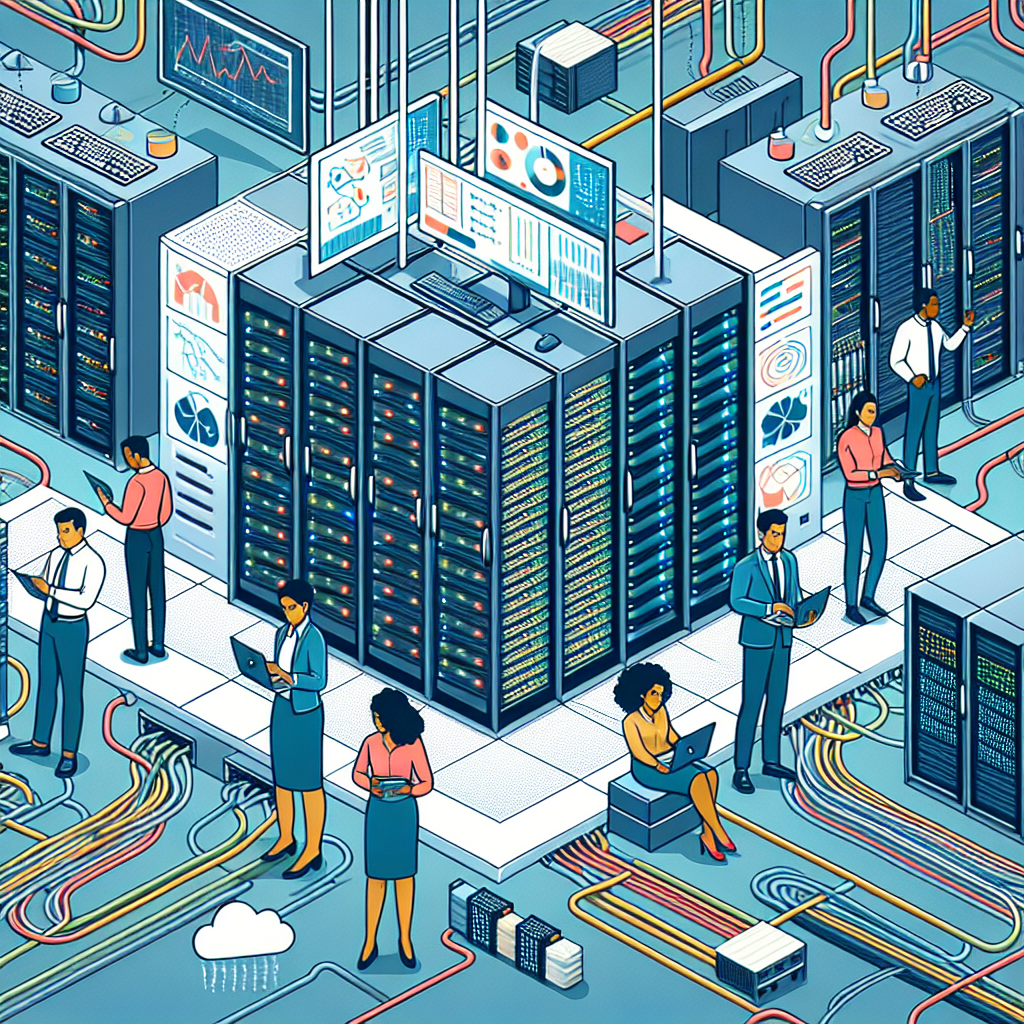
Data Center Problem Management: Key Challenges and Solutions for Addressing Issues
In today’s digital age, data centers play a crucial role in ensuring the smooth running of business operations. However, like any other technology infrastructure, data centers are prone to various issues that can disrupt their functioning and impact the performance of the organization. This is where problem management comes into play.Problem management is the process of identifying, analyzing, and resolving issues that affect the availability and performance of a data center. It involves identifying the root cause of problems and implementing solutions to prevent them from recurring in the future. While problem management is essential for maintaining the efficiency of data centers, there are several key challenges that organizations face when addressing issues in their data centers.
One of the main challenges in data center problem management is the complexity of modern data center environments. With the increasing adoption of virtualization, cloud computing, and other technologies, data centers have become more interconnected and complicated. This complexity makes it difficult to identify and resolve issues quickly, as problems can arise from various sources and affect multiple systems.
Another challenge in data center problem management is the lack of visibility into the infrastructure. Many organizations struggle to monitor and track the performance of their data center components, which makes it challenging to identify issues before they escalate into major problems. Without real-time visibility into the data center environment, organizations may struggle to pinpoint the root cause of issues and implement effective solutions.
Additionally, data center problem management is often hindered by a lack of skilled resources. Many organizations do not have dedicated teams or individuals with the expertise needed to address complex data center issues. This can lead to delays in problem resolution and increase the risk of downtime and data loss.
To address these challenges and ensure the efficient operation of their data centers, organizations can implement several key solutions:
1. Implement proactive monitoring tools: By deploying monitoring tools that provide real-time visibility into the data center environment, organizations can quickly identify and address issues before they escalate. These tools can track the performance of data center components, alert administrators to potential problems, and provide insights into the root cause of issues.
2. Establish a dedicated problem management team: By creating a team of skilled professionals responsible for managing data center issues, organizations can ensure that problems are addressed promptly and effectively. This team can work proactively to identify and resolve issues, minimizing the risk of downtime and data loss.
3. Implement best practices and processes: By following industry best practices and implementing standardized processes for problem management, organizations can streamline the resolution of data center issues. This includes documenting procedures, creating incident response plans, and conducting regular audits to identify areas for improvement.
4. Invest in training and development: To address the lack of skilled resources, organizations can invest in training and development programs to equip their teams with the knowledge and expertise needed to manage data center problems effectively. By providing ongoing training and support, organizations can build a strong problem management team capable of addressing issues promptly and efficiently.
In conclusion, data center problem management is a critical aspect of maintaining the efficiency and reliability of data center operations. By addressing key challenges and implementing effective solutions, organizations can minimize the impact of issues and ensure the smooth running of their data centers. By investing in proactive monitoring tools, dedicated teams, best practices, and training programs, organizations can enhance their problem management capabilities and reduce the risk of downtime and data loss.

Addressing Data Center Cooling Challenges in a Growing Industry
As the demand for data storage and processing continues to soar, data centers are becoming increasingly critical to the operations of businesses across all industries. However, as these facilities grow in size and complexity, they face a number of challenges, with cooling being one of the most significant.Data centers generate a significant amount of heat due to the large number of servers and other equipment housed within them. In fact, studies have shown that cooling can account for up to 40% of a data center’s total energy consumption. As data centers continue to expand and become more densely packed with equipment, the challenge of effectively cooling these facilities becomes even more critical.
One of the main issues facing data center cooling is the uneven distribution of heat within the facility. Hot spots can develop in certain areas, leading to inefficiencies in cooling and potential equipment failures. To address this challenge, data center operators are turning to innovative cooling solutions such as containment systems, liquid cooling, and advanced air circulation techniques.
Containment systems, such as hot aisle/cold aisle configurations and chimney cabinets, help to isolate hot and cold air within the data center, preventing mixing and improving overall cooling efficiency. Liquid cooling, which involves circulating coolant directly to the heat-generating components, can also be more effective at dissipating heat than traditional air cooling methods. Advanced air circulation techniques, such as using computational fluid dynamics to optimize airflow patterns, can help to more effectively distribute cool air throughout the data center.
In addition to these technical solutions, data center operators are also exploring ways to improve the overall energy efficiency of their cooling systems. This includes using energy-efficient cooling equipment, such as variable speed fans and pumps, as well as implementing strategies to reduce overall cooling loads, such as optimizing server utilization and implementing free cooling methods.
As the demand for data storage and processing continues to grow, addressing the cooling challenges facing data centers will be critical to ensuring the reliability and efficiency of these facilities. By implementing innovative cooling solutions and focusing on energy efficiency, data center operators can help to ensure that their facilities can continue to meet the growing needs of businesses across all industries.
